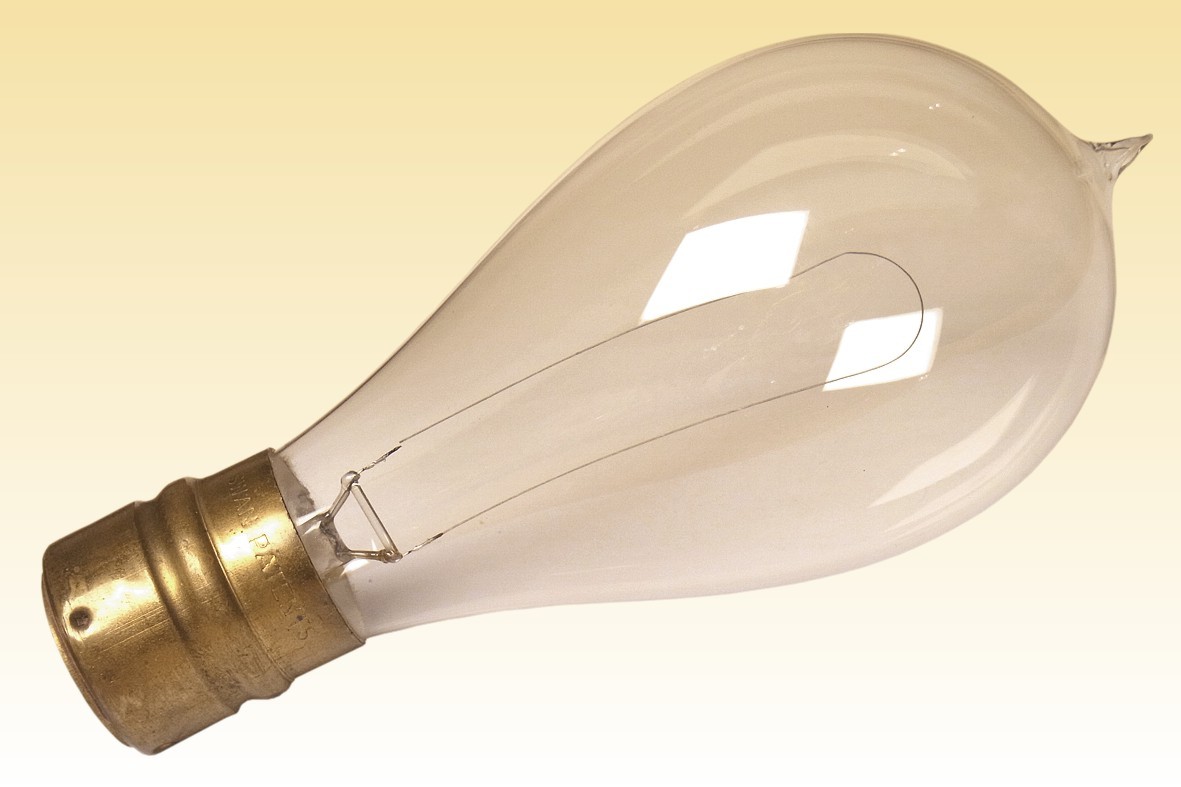
|
American Swan Carbon Filament Lamp |

This lamp appears to be of a model produced between about 1893-1895 at the Brush works. Lamps produced by the company during the earlier years are quite distinctive because of the so-called goal-post stem design that supports the filament. However this model has a simplified construction employing a flared stem tube, which was first introduced in 1893 to facilitate the operation of sealing into the bulb. Rather than pinching the wires through the flare tube as was done by competitors, this Swan lamp retains a modified version of the goal-post design in which the leadwires are formed into a Y-shape, to match the narrow diameter of the flare tube. That assembly is then fused into the open end of a glass bulb.
The filament is made by Swan's squirted cellulose process and has been attached to the lead wires with carbon deposited by heating the joint while immersed in a liquid hydrocarbon. The cap is not Swan's own design, but is of the Thomson-Houston pattern, made so as to allow Swan lamps to be used in the installations of its competitor.


| Manufacturer: | Swan Lamp Mfg. Co. | Division of Brush |
| Lamp Power: | Approx 90 Watts | |
| Lamp Voltage: | 100 Volts | |
| Lamp Current: | 0.9 Amperes | |
| Cap Type: | Thomson-Houston (small) | Fibre Insulator |
| Bulb Type: | P-60 | P-19 in eighths/inch |
| Bulb Finish: | Clear | Soda-lime glass |
| Filament Type: | Squirted Cellulose | Deposited joint |
| Atmosphere: | Vacuum | No getter |
| Luminous Flux: | 201 lm | 16 Candle Power |
| Luminous Efficacy: | 2.2 lm/W | 5.6 Watts per Candle |
| Beam Intensity: | N/A | |
| Beam Distribution: | N/A | |
| Colour Temperature & CRI: | CCT: Approx. 2000K | CRI: Ra 100 |
| Chromaticity Co-ordinates: | CCx: 0.527 | CCy: 0.413 |
| Rated Lifetime: | Approx 800 hours | |
| Burning Position: | Vertical only | (to avoid filament sag) |
| Overall Length: | 140mm | 5¼ inches |
| Light Centre Length: | 82mm | 3¼ inches |
| Factory: | Euclid, Ohio | U.S.A. |
| Date of Manufacture: | c. 1893-1895 | |
| Original / Present Value: | Unknown | Unknown |
